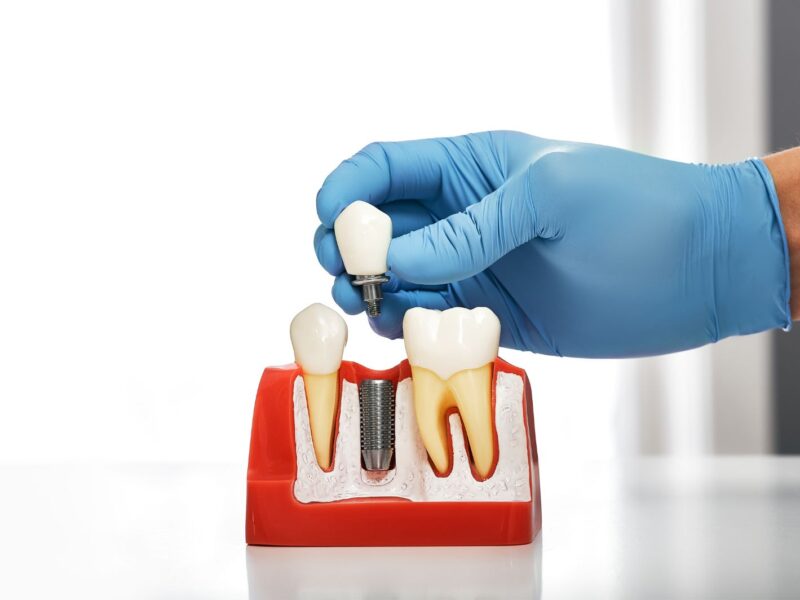A smile can leave a lasting impression. If your teeth are misaligned, crowded, or have gaps, they can affect your confidence and oral health. Orthodontics is a branch of dentistry that addresses these problems, helping you achieve a stunning smile.
This guide explores various types of orthodontic treatment available to transform your smile.
Table of Contents
Traditional Metal Braces
For many years, metal braces have been a reliable way to correct teeth alignment. They consist of metal brackets glued to your teeth and connected by wires. These wires are adjusted periodically to move your teeth into the desired position.
Metal braces are especially effective for complex or severe orthodontic issues. Though they are noticeable, modern versions are smaller and more comfortable. Moreover, metal braces work faster than other treatments in many cases.
Ceramic Braces
Ceramic braces work much like traditional metal braces. It uses clear or tooth-colored brackets for a more discreet appearance. They blend in with your teeth, making them less noticeable.
Ceramic braces are a good option if you want an effective treatment but prefer a less conspicuous look. While they are slightly more fragile than metal braces and can be more expensive, they still provide efficient results.
Lingual Braces
Lingual braces are unique because they are placed on the back side of your teeth, facing your tongue. This makes them invisible from the front, offering a discreet way to straighten your teeth.
These are custom-made for each patient. This means that they can address complex orthodontic issues just like traditional braces. However, they can be harder to clean and may require a longer adjustment period due to their placement.
Clear Aligners
Clear aligners consist of a sequence of personalized, see-through trays designed to snugly cover your teeth. They gradually move your teeth into place without the use of brackets or wires. Aligners are removable, allowing you to eat, brush, and floss comfortably.
These are ideal for mild to moderate alignment issues. They are not suitable for severe cases, but they offer a clear advantage in terms of aesthetics and modern teeth straightening.
Self-Ligating Braces
Self-ligating braces are similar to traditional metal and ceramic braces but use clips or doors to hold the wire instead of elastic bands. This reduces friction and can make the adjustment process smoother.
These come in both metal and ceramic forms. They often require fewer visits to the orthodontist and can be easier to clean. They are effective for a wide range of orthodontic issues.
Palatal Expanders
For patients with a narrow upper jaw, a palatal expander can widen the arch of the mouth. This device is fixed to the upper molars and gradually expands the palate over time. By creating more space, it can correct issues like crossbites and crowding.
They are often used in children before their jaws have fully developed, but adults can benefit from them as well. Once the desired expansion is achieved, retainers or braces may follow to finish the treatment.
Retainers
Retainers are not just for holding teeth in place after orthodontic treatment. Some types can make minor adjustments. There are two main types:
- removable
- fixed
Removable retainers are designed to be removed for eating and cleaning. Fixed retainers are securely bonded to the back of the teeth. Both types help maintain your newly aligned smile by preventing teeth from shifting back to their original positions.
Headgear
In specific cases, orthodontists may use headgear along with braces to correct severe bite issues. This device applies pressure to the upper teeth and jaw to guide them into better alignment.
Patients typically wear headgear for a few hours each day or overnight. While not as common as other treatments, headgear remains an effective tool for correcting complex bite problems.
Space Maintainers
Space maintainers are used primarily in children who have lost baby teeth prematurely. These devices keep the gap open until the permanent teeth erupt. Space maintainers can be fixed or removable.
The fixed types are cemented to adjacent teeth, while the removable versions can be taken out for cleaning. By maintaining the gap, they prevent issues like overcrowding and misalignment.
Surgical Orthodontics
Orthognathic surgery, or surgical orthodontics, corrects severe jaw abnormalities. This type of treatment is reserved for cases where the jaw structure cannot be aligned with braces or other devices alone. This procedure can improve both function and appearance.
Recovery time and the complexity of the surgery can vary. However, the results can be life-changing for those with severe jaw issues.
Temporary Anchorage Devices (TADs)
TADs are miniature implants used to provide a fixed point for applying orthodontic forces. They help achieve movements that might be difficult with braces or aligners alone.
TADs are temporarily placed into the bone and removed once they are no longer needed. They can speed up the treatment process and improve the results by providing additional leverage.
Choosing the Right Treatment
Selecting the best orthodontic treatment depends on various factors, including the severity of your dental issues, your lifestyle, and your aesthetic preferences. Consulting with an orthodontist is crucial in understanding the most suitable option for your needs. They will perform a thorough examination, take X-rays, and discuss your goals to create a personalized treatment plan.
Benefits Beyond a Beautiful Smile
Orthodontic treatment offers benefits that extend beyond aesthetics. Properly aligned teeth are easier to clean, reducing the risk of cavities and gum disease.
A well-aligned bite also prevents wear and tear on your teeth and alleviates strain on the jaw muscles. Overall, orthodontic care can improve oral and general health, boosting your confidence and quality of life.
Exploring a Comprehensive Guide to Different Types of Orthodontic Treatment
Different types of orthodontic treatment have advanced significantly over the years. It provides a range of options to suit different needs and preferences. From traditional metal braces to clear aligners, there is a solution for every smile. By choosing the right treatment, you can achieve a stunning smile makeover.
Remember to maintain good oral hygiene habits. Follow your orthodontist’s instructions for the best results. With patience and dedication, you’ll be on your way to a healthier, more confident smile. Keep smiling!
For more on this topic, visit our blog.



